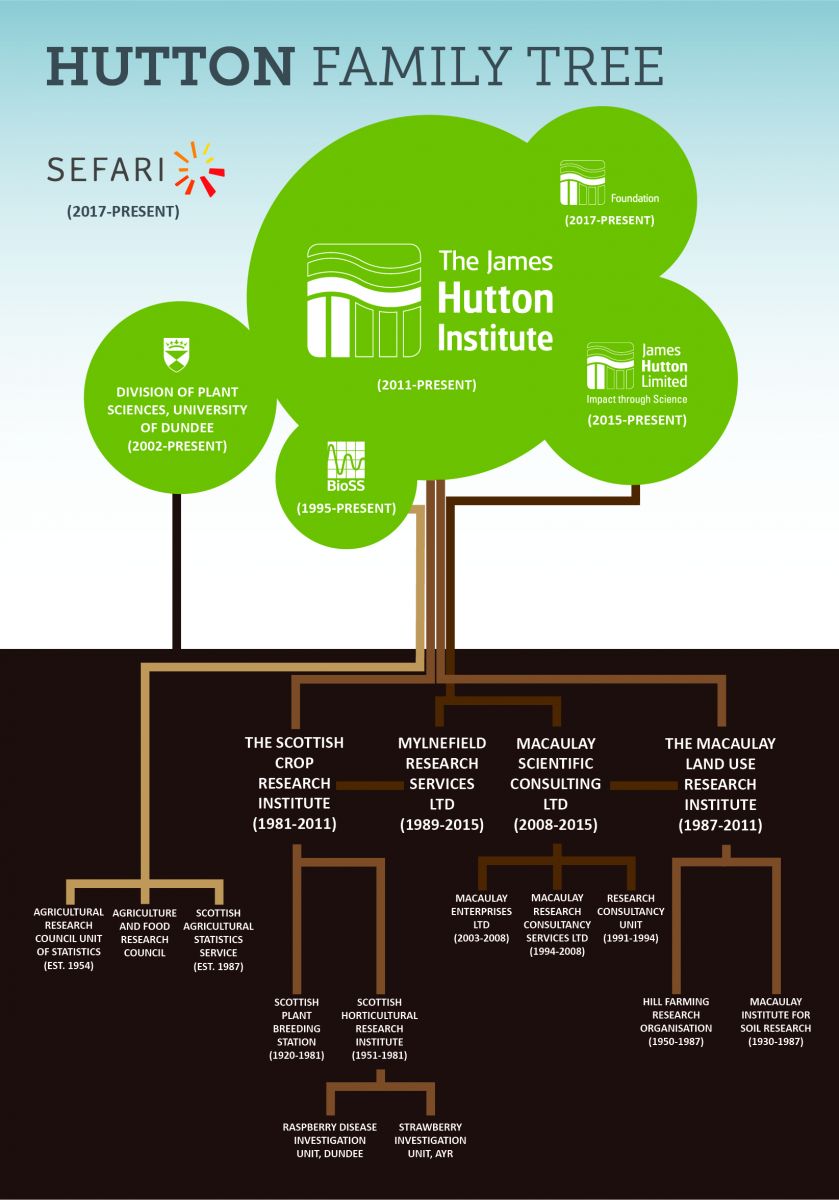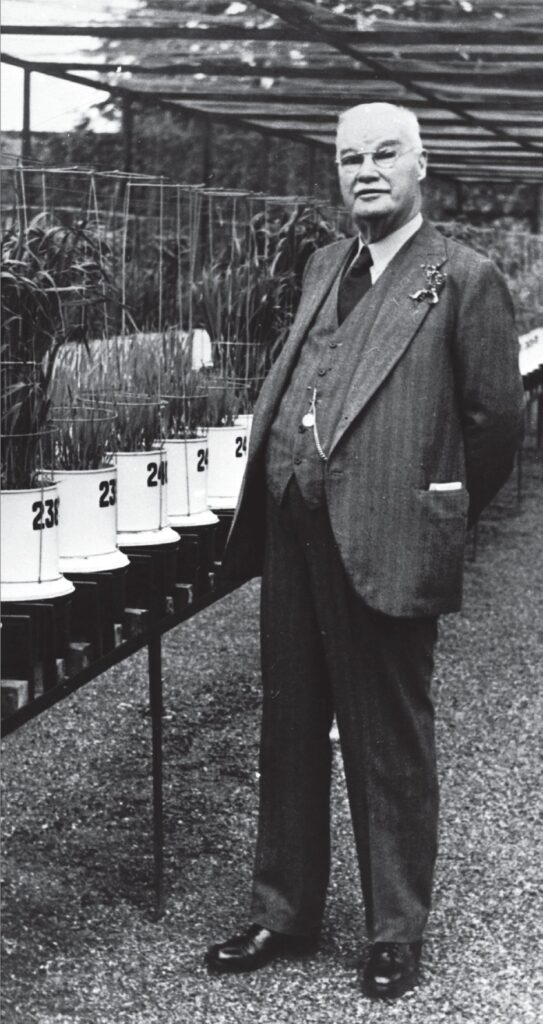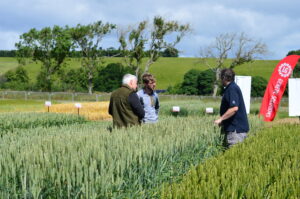Our history

The James Hutton Institute was formed in 2011 from a merger of the Macaulay Land Use Research Institute (MLURI) and the Scottish Crop Research Institute (SCRI). These organisations had their own predecessors. Illustrated on the Hutton family tree, where you can find more on our history.
We take our name from James Hutton (1726-1797), Scottish geologist, agriculturalist, chemical manufacturer, naturalist and physician. Often referred to as the “Father of Modern Geology”. James Hutton played a key role in establishing geology as a modern science.
Our scientists follow the inspiration from our history, James Hutton and deliver global impact through excellent science, collaboration and innovation.

Macaulay Land Use Research Institute
The Macaulay Institute for Soil Research was founded in 1930. Formed through a benefaction from one of Canada’s Scottish sons, Dr T.B. Macaulay (1860 – 1942), of the Sun Life Assurance Company of Canada. His aim was to improve the productivity of Scottish agriculture.
Dr Macaulay was a descendant of the Macaulays from the Outer Hebridean Isle of Lewis, Scotland. He was true to his Hebridean roots throughout his life, often giving large donations to Lewis. He funded various projects including a new library and a new wing at Lewis hospital.
In April 1987, the Macaulay Institute for Soil Research merged with the Hill Farming Research Organisation. It became the Macaulay Land Use Research Institute (MLURI).
MLURI was established to carry out research in support of the agricultural industry, taking account of the interaction between the industry and other land users and set in the context of the environmental objectives of the UK Government and the European Union.

